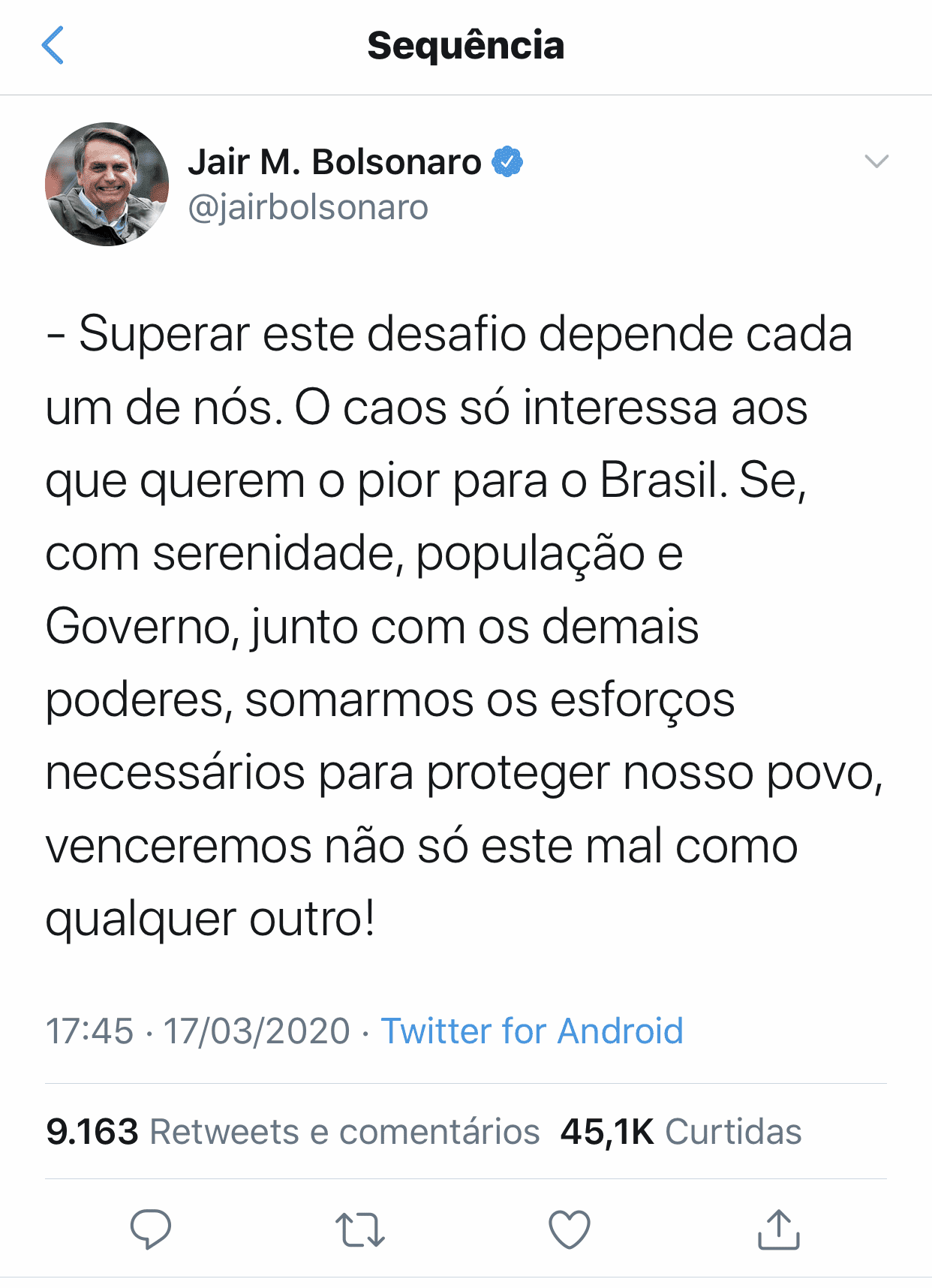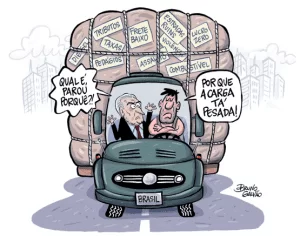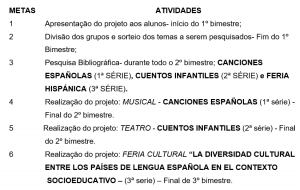ORIGINAL ARTICLE
MALDONADO, Gabriel Orlando Quiñones [1]
MALDONADO, Gabriel Orlando Quiñones. Interactional Sociolinguistics in political discourse: an analysis of interactive oral excerpts in contexts of the COVID-19 pandemic. Revista Científica Multidisciplinar Núcleo do Conhecimento. Year 05, Ed. 08, Vol. 02, pp. 15-27. August 2020. ISSN: 2448-0959, Access Link: https://www.nucleodoconhecimento.com.br/lyrics/sociolinguistica-interactional, DOI: 10.32749/nucleodoconhecimento.com.br/lyrics/sociolinguistica-interactional
SUMMARY
This article is based on the area of Interactional Sociolinguistics and is the result of the analysis of excerpts from the different interactive oral discourses of the President of Brazil in contexts of the COVID-19 pandemic. The oral linguistic corpus of these discourses recorded in different social media spread in Brazil and worldwide was collected as a reference for analysis. The analysis allowed evaluating and interpreting the different interactive oral excerpts of political discourse, as well as to discuss the confusing link that had the relationship between discourse, politics and coronavirus in this pandemic time that our planet has seen until the date of data collection, in July 2020.
Keywords: Interactional Sociolinguistics, oral discourse analysis, political discourse analysis, COVID-19.
1. INTRODUCTION
The Interactional Sociolinguistics studies, investigates and analyzes oral or written discursive acts in the daily life of the different social components. Oral discourse is deduced by a type of communicative activity by two or more participants who influence each other in an exchange of verbal and nonverbal actions and reactions in narrative interactions. In the interaction, the interlocutors activate interpretative schemes that improve from the first contact of socialization. These representations allow us to interpret each fragment of oral or written discourse and reflect on all its contextualization from the individual perspective of each announcer to the point of interaction with other interlocutors.
Sociolinguística Interacional (SI) is an approach to discourse analysis that has its origin in the search for replicable methods of qualitative analysis that explain our ability to interpret what participants intend to convey in daily communicative practice. It is well known that conversationadores always rely on the knowledge that, in addition to grammar and lexicon, is heard. But how this knowledge affects understanding is not yet sufficiently understood. (GUMPERZ, 2015, p. 9).
The authors of Interactional Sociolinguistics work the processes of contextualized constructions and interpretations of the meanings from which the interlocutors establish relationships between what is expressed in the situation of interaction with the knowledge acquired from other discursive experiences. The concept of strategic contextualization tips allows us to explain how participants create context and guide their interlocutors in the trace to an appropriate interpretation of their verbal or non-verbal actions. The interlocutors of a conversation rely on these strategies to respond to their intentions and invest meanings to what they see, ask and hear in the interactive meetings in which they participate. The different strategies of discursive contextualization include body language, as well as manipulation of objects, gestures, posture, registration, changes in discursive strategies, among others.
The authors of Interactional Sociolinguistics refer to the need to study discursive strategies (GUMPERZ, 1982) that allow, in different institutional contexts, to verify that speech constraints are those of social relationships (DIAMOND, 1996) and determine how interlocutive and interactive relationships are organized in institutional and mundane contexts from the study of verbal routines, conversational devices and discursive practices that allow the construction of discursive roles (ALMEIDA , 2012).
2. THEORETICAL FRAMEWORK
Oral discourse is the most basic expression of communication that exists between politicians and the community. It is believed that due to its mainly oral nature, it lacks moderation, being attributed characteristics as unpredictable, careless, incomplete, without indoctrination and even vulgar. In this analysis, the main interest is the oral political discourse during the Covid-19 pandemic. Thus: “when an incident occurs and spontaneous involvement is threatened, reality is threatened” (GOFFMAN, 1967, p. 135). The conversations obtained from interactive oral discourses of the President of Brazil, Jair Bolsonaro, will be studied. That’s why the sequence will delve deeper into this kind of discourse. Another relevant aspect of oral discourse is that its dialogue is more in person and is the face-to-face transmission that authorizes it to be spontaneous and fast, without prior formal production.
When politicians express themselves in a particular communicative act, they should consider adapting to their way of speaking to the eventuality in which they are, therefore, thus: “they will be forced to accept some events as conventional or natural signs of something that is not directly available to the senses” (GOFFMAN, 1967, p. 140). Political exposures require a certain care in conversational interaction to be understandable to the community, involving, in this process, aspects such as body posture, relationship of interlocutors and the way of transmitting the message. These are very important factors that foster the feeling of veracity.
Successful conversational activity, in which the intersynchronization processes between participants function in a well-regulated manner, therefore performs this ritual function of establishing a community, around the recognition of the same lived world and the identity of a member of the same community of life (RODRIGUES, 2007, p. 11).
The principle of cooperation studied by Grice[2] is a principle that deals with linguistic behavior from which conversational exchanges are conditioned, not only by the linguistic productions of the speakers, but also by the relations between the interlocutors. The principle of cooperation is a general principle which is in so-called maximum conversational principles, the maximum conversational principles: maximum quantity (inform what is necessary); maximum quality (do not say what you believe to be false); relevance (relevant in relation to the purpose of the conversation) and the maximum mode (whether ordered, clear and brief). Such concepts, centered on language as a social activity, show the insufficiency of the linguistic code alone and, moreover, the issue of violation of these principles is often translated into irony and sarcasm.
The data to be analyzed can be collected from speeches made daily by any person, professionals and in political interactions in front of an audience or from technological media, such as radio, television or social networks. Gumperz (1982, p. 24-25) explains that:
the sociolinguistics that works in this tradition begins by recording the daily discourse of selected speakers according to sociological sampling criteria as representative of a particular group or community, and not according to criteria of family history or linguistic formation, as in previous dialectical studies. In addition, the bidding procedures start from conventional methods of dialect questionnaire, in which speakers are questioned directly and asked to illustrate or produce speech samples.
Political discourse should aim to provoke a certain behavior in its receivers. Sometimes political discourses simply inform about a government measure, such as the budget for the fiscal year or resolutions on regulatory measures. However, the same measures, when reported by the representative in search of the support of the population, have a character that revolves around the interactive political discourse. Most political discourses try to convince their recipients. According to Lopes (2009), there is empirical evidence, in terms of syntactic and prosodic behavior, that a report of the justification relationship requires a sequence of two speech acts, and also pointed out that this relationship occurs in different types of argumentative texts. Political discourses to convince interlocutors or receivers should be argumentative discourses.
This means that they are stating something and logically support it with evidence or reasoning. However, the argument, in political discourse, differs from that used in traditional rhetoric: in the latter, the argument is used to persuade an opponent. On the contrary, in political discourse, the adversary is not part of communication.
Interpersonal disharmony tends to manifest itself through rude (or unpolished) behavior and a lack of cooperation or a refusal to seek relevance to others. This is especially what happens in the context of discursive genres of confrontation, such as political debate, where verbal fairs are the rule and politeness has little place (SIMONIN, 2010, p. 28).
Political discourses always have direct addresses, that is, the people to whom the announcer, in this case, the president, addresses explicitly. However, there are also indirect recipients who should receive the transmitted message, even if they are not forwarded directly to them. For example, when a president speaks on television stations and radio stations, the citizens of his country are direct recipients/receivers. However, the message is received and interpreted by other recipients/recipients, such as foreign politicians, international companies or linguists dedicated to the discursive analysis of these representatives. Rodrigues (2007, p. 9), explains that:
discursive interaction is an activity that human beings perform in each other’s physical presence, from this presence to those who take part in it the status of participants. It is because physical presence is the first and fundamental factor of discursive practice that all other modalities of discursive practice have in conversational activity their model and its foundation.
As mentioned, political discourses explicitly aim to convince their audience, but they are also part of a strategy that creates an image of the representative who pronounces the speech and sends messages to identify possible allies or enemies. Most of the discursive strategies used by politicians throughout history have been tools that are in their practices within the definition of public relations strategies. Therefore, implementing the broader definition of this terminology varies in relation to the use of persuasion, rhetoric, and opinion writing to convince others that their point of view is correct. According to Gumperz (1982, p. 188),
are becoming increasingly common in multiethnic societies as minority dialect speakers take advantage of public communication channels to disseminate their opinions. As they try to convince or convert others to their way of thinking, serious discrepancies often arise between their stated intentions and public interpretations of what their goals are.
The metaphor is also a rhetorical figure who refers to something without mentioning it, but takes a sample of what it has in common. In political discourses, metaphors are used to identify their enemies with negative ideas. They are also used to bring complex economic, financial, political and social processes closer to the simplicity of the inexperienced. However, this simplification is always ideological: only this part of reality is selected and helps convince the population that a measure is positive or negative. According to Gumperz (1982, p. 98),
the case of metaphorical use is much more complex. The signaling mechanism involved is a change in contextualization tips, which is not accompanied by a change in the topic and other extralinguistic context markers that characterize the situation. This partial violation of the expectations of occurrence gives rise to the inference that some aspects of the connotations, which in other places apply to the activity as a whole, should be treated as affecting only the ilocution force and the quality of the speech in question.
Today, any discourse based on lies is of singular importance, because today, advertising and communications organizations are in the hands of the different experts in this field of knowledge and, when they resort to lying, they put all their experience and credibility at risk. Lying in political discourse is a manipulation of signals and not of forces that always tries to put the receiver in a lower position relative to who is lying. The advantage of lying about direct attack is that, by chance, the caller does not know that he is being attacked. Confusion, from a daily point of view, is linked to a lack of clarity regarding a topic or situation. Confusion also implies a level of disorder. If we analyze the concept of confusion caused by political discourse, the receiver can say that he is confused because he has doubts about the terms exposed in the interaction, but does not have enough mental clarity to decide about the claim of the representative.
However, in political discourses, we often perceive an erroneous data transmission that benefits only those who want the oppression of the people. The pragmatic order corresponds to the function of the practice of the order in which the words and relevance of the information provided are transmitted. Thus, the topics to be discussed are presented according to the provision of this information. The way words are organized is very relevant for them to be congruent and form an understandable discourse. This means that we express ourselves in the correct order of the sentence to obtain good cohesion and coherence. According to Lopes (2009, p. 242): “it is generally accepted that establishing coherence is a central aspect of discourse understanding; therefore, processing the meaning of discourse involves recovering the relations of coherence that integrate the individual propositions expressed in the text into a greater whole.”
Cohesion is the attribute by which the asserts of a text are properly linked from a lexical and grammatical point of view. Fonseca explains (1994, p. 8), that “thus the texture in the traits that make a unified semantic product of a verbal product, as such functioning globally in a communication situation, in which it is adequately inscribed”.
3. METHODOLOGY
The investigation was carried out from a sample of excerpts from the different interactive oral discourses of the President of Brazil, Jair Messias Bolsonaro[3]. Bastos and Biar explain (2015, p. 103) that “in general, it can be said that the analyses are qualitative and interpretive in nature, interested, as they said, in what happens in social life.” Bolsonaro was born in Campinas, São Paulo, on March 21, 1955, and is 65 years old. He was Captain of the Brazilian Army, Nioaque (MS), between 1979-1981. His academic career is based on the area of Officer Training, Academia Militar das Agulhas Negras (AMAN) and Physical Education, Army Physical Education School, among others. In this investigation, several excerpts of the speeches made by the President of Brazil in the first half of 2020 will be evaluated.
These collected excerpts were published in the newspaper Folha de São Paulo. The President of Brazil made innumerable broadcasts at the Planalto Palace and the Alvorada Palace in Brazil’s capital, Brasilia. He has also participated in several television and radial programs, broadcast on different social media. All the excerpts collected are linked to the Brazilian president’s lines of thought regarding the COVID-19 pandemic. According to Gumperz and Cook-Gumperz (1996, p. 10), “the initial task in the analysis is basically ethnographic, of collecting real instances of interactive situations containing all the internal evidence to document the results.” They also point out that: “recordings of public meetings or public broadcasts on site provide a good first source of materials. Because it is often impossible to collect the basic information needed for the later steps of the analysis, fieldwork is also required” (Idem, p. 10).
4. ANALYSIS OF EXCERPTS OF THE INTERACTIVE ORAL SPEECHES OF THE PRESIDENT OF BRAZIL
We will analyze the oral linguistic corpus, collected in these political discourses, recorded in the different social media spread in Brazil and in the world. The analysis will allow us to evaluate and interpret the different interactive oral excerpts of the political discourse in the context of the COVID-19 pandemic that our planet has seen until the date of the following data collection.
Excerpt 1:
“There is the issue of coronavirus also that, in my opinion, is oversized, the destructive power of this virus. So maybe it’s being boosted even for economic issues, but I believe that Brazil, it’s not going to work, it’s already worked.”
Excerpt 1 was said by the president on March 9, 2020, at a Congress in the United States in Miami. Here we can see one of the axes of opposition of Joaquim Fonseca (1992, p. 318), in which the President of Brazil made persuasion in this quotation of his speech. According to the author there is: “the opposition between anational dimensions (directly or indirectly realized), namely praise, criticism/censorship, persuasion, desuation”.
Excerpt 2:
“I’m going to call [ministro da Saúde, Luiz Henrique] Mandetta. I’m not a doctor, I’m not an infectologist. What I’ve heard so far ot[é que]her flus have killed more than this.”
Excerpt 2 was expressed by the president on March 11, 2020, in an interview at the Alvorada Palace in the Brazilian capital, Brasilia. Society knows that political discourses are mostly not designed by experts in all branches of human knowledge. But in that speech, he should have conveyed at least a minimum of ability and intelligence to contribute to his message: calm, respect, sensitivity and protection. Duarte (2005, pp. 294-295), says that “the announcer and speaker share knowledge and beliefs prior to the moment they communicate and, if this is valid for verbal exchanges between actors who are politicians, it is also for the journalist who writes a text and the readers who read it”.
Excerpt  3:O excerpt 3 was taken from Twitter, written by the president on March 17, 2020, in a post on his official social network account. We understand here the idea that the president assigns responsibility to each individual, because he expresses that “overcoming this challenge depends on each of us.” It can also be understood that it is dodging the responsibility of the government and applying it individually. According to Rodrigues (2007), discursive modalities, such as epistolary, telephone or telematic correspondence ” in writing and reading literary works or any other modality of written discourse, can only understand the meaning of what we write or read because we assume the physical presence of interlocutors” (RODRIGUES, 2007, p. 9). It also alludes that: “each of these other modalities of discursive practice depends on technical devices that cannot ensure the totality of the physical presence involved in conversational activity face to face” (Idem, p. 9).
3:O excerpt 3 was taken from Twitter, written by the president on March 17, 2020, in a post on his official social network account. We understand here the idea that the president assigns responsibility to each individual, because he expresses that “overcoming this challenge depends on each of us.” It can also be understood that it is dodging the responsibility of the government and applying it individually. According to Rodrigues (2007), discursive modalities, such as epistolary, telephone or telematic correspondence ” in writing and reading literary works or any other modality of written discourse, can only understand the meaning of what we write or read because we assume the physical presence of interlocutors” (RODRIGUES, 2007, p. 9). It also alludes that: “each of these other modalities of discursive practice depends on technical devices that cannot ensure the totality of the physical presence involved in conversational activity face to face” (Idem, p. 9).
Excerpt 4:
“What is happening in the world shows that the risk group is of people over 60 years. So why close schools? Rare are the fatal cases of healthy people under 40 years of age.”
Excerpt 5:
“From my history as an athlete, if I was infected by the virus, I would not have to worry, nothing would feel or be affected, at most, with a cold or cold, as said by that well-known doctor, from that well-known television.”
Excerpts 4 and 5 were reported by the president on March 24, 2020, on different radio and television stations. In excerpt 4, we perceive the president’s unbelief in his oral interaction. At that time, it was declared that the risk group was the elderly, so, based on their arrogance and ignorance, he does not believe that this disease affects the young-adult population. The position of his political discourse always presents a difficult understanding and a contradictory point, in this situation for health experts. According to Kerbrat-Orecchioni (1980, p. 33), “it is necessary to admit for each message the existence of additional and random receivers, the nature of which the sender cannot predict or, consequently, the interpretation they will give to the message produced.” In excerpt 5, the president tells us about a life experience with the explanation of his athlete’s track record.
It also exposes its own motives and minimizes the effect of the disease, calling it “flu-like”. In the analysis of life experience narratives in radio broadcasts, participants spontaneously perform local identities, relevant to the construction of an image of themselves with a certain status: participants ratified or as “experts”, identified according to parameters such as sex, profession, age or in relation to a lived history, as a testimony of an experience they want to see shared (ALMEIDA , 2011).
Excerpt 6:
“This virus is almost like rain, it will hit you,” Bolsonaro added. Some have to take greater care of this phenomenon. It happens, unfortunately it happens.”
Excerpt 7:
“Let’s take care, especially the elderly, who have comorbidity. And the younger ones, be careful. But if you are affected by the virus, rest assured that, for you, the possibility of something more serious is close to zero.”
Excerpts 6 and 7 were communicated by the president on July 7, 2020 to the broadcasters of CNN Brazil, Record and TV Brazil, which were convened to expose their important new message to the people. Globally deployed quarantine for all people refers to social isolation as an articulated protection mechanism around the world to maintain a consistent degree of normality and maintain health. In section 6, we see that the president likes COVID-19 to rain and says that at any time it will affect you. In this discourse, the pun is present to minimize the reality of the disease. Thus: “In some conversation exchanges, an adjacency pair rule may be violated. We could simply dismiss such exchanges as “non-grammatical”, non-“real” conversations and there is no adequate data” (BILMES, 1988, p. 46).
In section 7, with no scientific basis at hand, the president expresses that young people should be calm, since the possibility of the virus affecting them is closer to zero. On that day he “confirmed that he contracted” COVID-19 and that he is “perfectly fine”. The use of sarcasm in communication can make us a bad move when we want to gain the trust of others. Puns do not offer us a strong and clear message; on the contrary, these puns are the promoters of new questions that seek to clarify the doubts that still persist. President Bolsonaro in his speech is violating grice’s conversational maxim, because it did not satisfie the maximum of the relationship. He was neither relevant nor relevant in his exhibition.
According to Duarte (2005, p. 293): “assumptions and other implicit are discursive strategies used by the speaker to, indirectly and subretially, impose certain ideas or opinions: “Politicians have, in fact, an enormous skill (or need…) of saying-not-saying or not-saying — which, in the case, comes to the same.”
FINAL CONSIDERATIONS
The maximum mode is the most violated in the political messages of the Brazilian president for not projecting clarity in the excerpts analyzed. This public and open violation allowed us to properly analyze and interpret what it meant and what was exposed in its interaction. It is known that the situation of isolation caused by the COVID-19 pandemic is crucial and clarity in messages is needed so that people can get the best possible interpretation. People who are not informed or unaware of the cause and effect of this new virus, or the idiomatic expressions of the Portuguese do Brasil, could hardly interpret what the president wanted to communicate in most of his messages. In radio and television broadcasts, even in the different social networks of the president (announcer), Grice’s maxims were not respected and that is exactly what triggers the fear and confusion of the receivers.
It has been seen as indirect interactive political discourse is common to almost all of the examples studied, since communicating something different from what is literally said allows linguistic play in the interactions and interpretations of the recipients. This indirect act is characterized by the inconsistency between form and meaning; therefore, the pragmatic meaning to which the announcer (President of Brazil) attributes to the receivers (Brazilian and foreign) is composed of these messages of confusion with the double meaning, metaphors and, often, of a sarcastic nature. As Goffman said, it is a dramatist effect that arises diffusely from a scene that is presented (1959). As presented in the previous pages, The Interactional Sociolinguistics provides the appropriate tools to make a good analysis of political discourses, as presented the analysis of interactive oral excerpts in the context of pandemic caused by COVID-19.
For a long time fear has been present in our daily life, anywhere, country or culture. Fear was incorporated into several parts of the political discourse as the basis or support for the mastery of the underlying controversies in the face of the COVID-19 pandemic. Fear is an involuntary feeling, which, in this case, is created by the fuzzy and confusing messages transmitted in the brazilian president’s unscientific excerpts in the first half of 2020. These messages immerse your people to a level of frustrating and incalculable anxiety. Interfering in feelings when assuming political discourse is an exercise of irresponsibility on the part of leaders in each oral or written interaction with their interlocutors, because indexicality improves or expands the ability to understand how concepts such as identity, emotions, affective positions and ideology work in interaction (GÜNTHNER, 2011).
When our politicians resort to fear, the balance between reason and emotions is confronted and the people risk losing emotional stability. Political discourse is the main tool to communicate and inform everything that happens to the government in power. These discourses can bring persuasive communication, with techniques of argumentation and psychological strategies to impact people in the way they understand best. In political discourse, the communication process and the process of receiving a persuasive or confusing message have been part of the characteristic description of politicians for many years. First, an inference is made about the meaning, that is, an interpretation of this message and, finally, a reaction, an often emotional response, which is triggered as a consequence of the aforementioned interpretation of this political discourse.
The different political passages analyzed are interpreted as messages with a cold and neutral meaning, lacking the emotion of a human being with values, who really wants the well-being of the people and who should direct and maintain their safety.
REFERENCES
ALMEIDA, C. A. de. Aspectos semânticos e pragmáticos da co-construção de identidades discursivas em narrativas de experiência de vida produzidas por participantes de emissões nocturnas de rádio” In: COSTA, A.; FALÉ, I.; BARBOSA, P. (Orgs.) Textos Selecionados XXVI Encontro Nacional da Associação Portuguesa de Linguística. Lisboa: APL, 2011, pp. 35-48.
ALMEIDA, C. A. de. A construção da ordem interaccional na rádio. Contributos para uma análise linguística do discurso em interacções verbais. Porto: Edições Afrontamento, Biblioteca das Ciências Sociais, 2012.
BASTOS, L. C.; BIAR, L. de. A. Análise de narrativa e práticas de entendimento da vida social. DELTA: Documentação e estudos em linguística teórica e aplicada, v. 31, n. 4, 2015.
BILMES, J. Category and rule in conversation analysis. IPRA papers in pragmatics, v. 2, n. 1-2, p. 25-59, 1988.
DUARTE, I. M. Falar claro a mentir. Estudos em homenagem ao Professor Doutor Mário Vilela. 2005. Disponível em: https://repositorio-aberto.up.pt/bitstream/10216/7890/2/73321.pdf. Acesso em: 03 ago. 2020.
FONSECA, J. Linguística e texto/discurso: teoria, descrição, aplicação. Lisboa: Ministério da Educação, 1992.
FONSECA, J. O lugar da Pragmática na Teoria e na Análise Linguística. In: FONSECA, J. (Org.). Pragmática linguística. Porto: Porto Editora, 1994.
GOFFMAN, E. Presentation of Self in Everyday Life. New York: Doubleday Anchor, 1959.
GOFFMAN, E. Interaction Ritual. New York: Doubleday Anchor, 1967.
GRICE, H. P. Logic and conversation. In: Speech acts, 1975.
GUMPERZ, J. Discourse strategies. Cambridge: Cambridge University Press, 1982.
GUMPERZ, J. Sociolinguistique interactionnelle. Une approche interprétative. Paris: L’Harmattan, 1989.
GUMPERZ, J. J.; Cook-Gumperz, J. (Ed.). Language and social identity. New York: Cambridge University Press, 1996.
GUMPERZ, J. J. 11 Interactional Sociolinguistics: A Personal Perspective. In: TANNEN, D.; HAMILTON, H. E.; SCHIFFRIN, D. The handbook of discourse analysis. Reino Unido: Wiley Blackwell, 2015.
GÜNTHNER, S. The construction of emotional involvement in everyday German narratives–interactive uses of ‘dense constructions. Pragmatics, v. 21, n. 4, p. 573-592, 2011.
KERBRAT-ORECCHIONI, C. L’énonciation. De la subjectivité dans le langage. Paris: Armand Colin, 1980.
LOPES, A. C. M. Justification: a coherence relation. Pragmatics, v. 19, n. 2, p. 241-252, 2009.
Presidência da República Planalto. Biografia do Presidente. 2020. Disponível em: https://www.gov.br/planalto/pt-br/conheca-a-presidencia/biografia-do-presidente. Acesso em: 14 jul. 2020.
RODRIGUES, A. D. Processos cognitivos e estratégias de comunicação. Revista do Centro de Estudos Judiciários, v. 7, p. 1-27, 2007.
SIMONIN, O. (Im) politesse, coopération et principes d’inférence. Lexis. Journal in English Lexicology, n. 2, 2010.
APPENDIX – FOOTNOTE REFERENCES
2. Grice, H. Paul, 1975, “Logic and conversation”
3. https://www.gov.br/planalto/pt-br/conheca-a-presidencia/biografia-do-presidente
[1] Post-doctor in Education with research in Brazilian Musical Sociolinguistics from the Virtual University of Higher Studies – UNIVES in Mexico (2020); PhD in Portuguese Language Teaching from Bircham International University in Madrid Spain (2018); Master in Languages, Cultures and Societies in Multilingual Environments – French Foreign Language by the “Université des Antilles” in Martinique (M1-2016 / M2-2018); Postgraduate (Specialization) in Portuguese Language Studies: Research and Teaching by the Open University of Portugal (2014): Graduated in Modern Languages, qualification in Portuguese and French, from the Universidad de Puerto Rico – Río Pedras Enclosure (2009).
Sent: July, 2020.
Approved: August, 2020.




